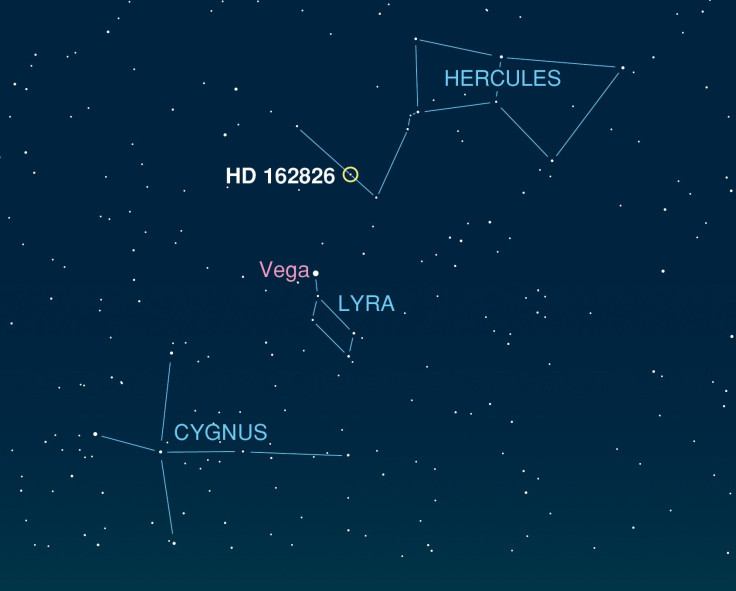Astronomers Discover Sun’s Long-Lost ‘Sibling,’ Massive Star's Planets Could Host Extraterrestrial Life

A star born from the same cloud of gas and dust as the sun was recently discovered, and researchers say the “solar sibling” could host life-supporting planets.
According to a new study from the University of Texas at Austin, the newly identified star, dubbed HD 162826, is the first “sibling” of the sun ever observed. The massive star is located 110 light years away in the constellation Hercules and has the same chemical configuration as the sun, leading astronomers to conclude it most likely came from the same cosmic womb as the star at the center of our solar system.
The study appears in the coming June 1 issue of the Astrophysical Journal. Astronomers say the discovery could help scientists better understand how life in our solar system formed billions of years ago.
“We want to know where we were born,” Ivan Ramirez, the lead astronomer of the study, said in a statement. “If we can figure out in what part of the galaxy the sun formed, we can constrain conditions on the early solar system. That could help us understand why we are here.”
Culling research from several astronomers around the world, Ramirez and his team followed up on 30 possible “solar sibling” candidates. Most of the stars were observed in detail at McDonald Observatory in Fort Davis, Texas. Astronomers determined the star’s chemical fingerprint through high-resolution spectroscopy, a tool that allows scientists to measure the physical properties of celestial objects.
They found that HD 162826 is actually about 15 percent larger than the sun and even a bit hotter.
Astronomers have long been on the hunt for solar siblings, but have had little luck up to this point. Researchers hope they can develop a better system for identifying solar siblings and even create a road map for locating them.
“The idea is that the sun was born in a cluster with a thousand or a hundred thousand stars. This cluster, which formed more than 4.5 billion years ago, has since broken up,” Ramirez said. “A lot of things can happen in that amount of time.”
Because sibling stars are so similar compositionally to our own sun, astronomers believe there’s at least a small chance these stars could have life-sustaining planets orbiting them.
“It could be argued that solar siblings are key candidates in the search for extraterrestrial life,” Ramirez said.
© Copyright IBTimes 2024. All rights reserved.






















